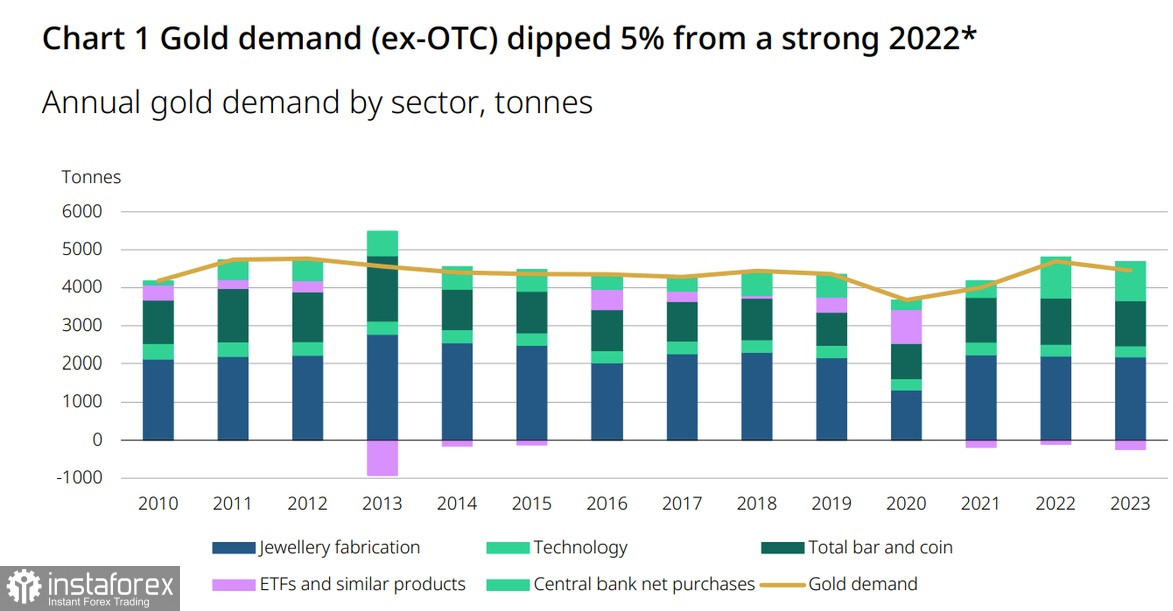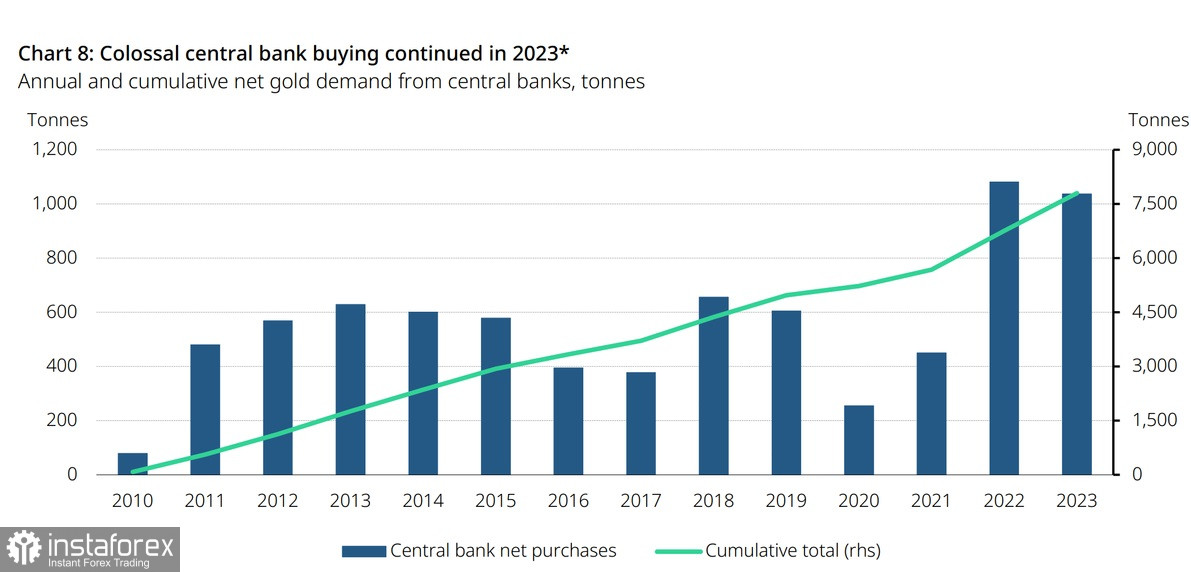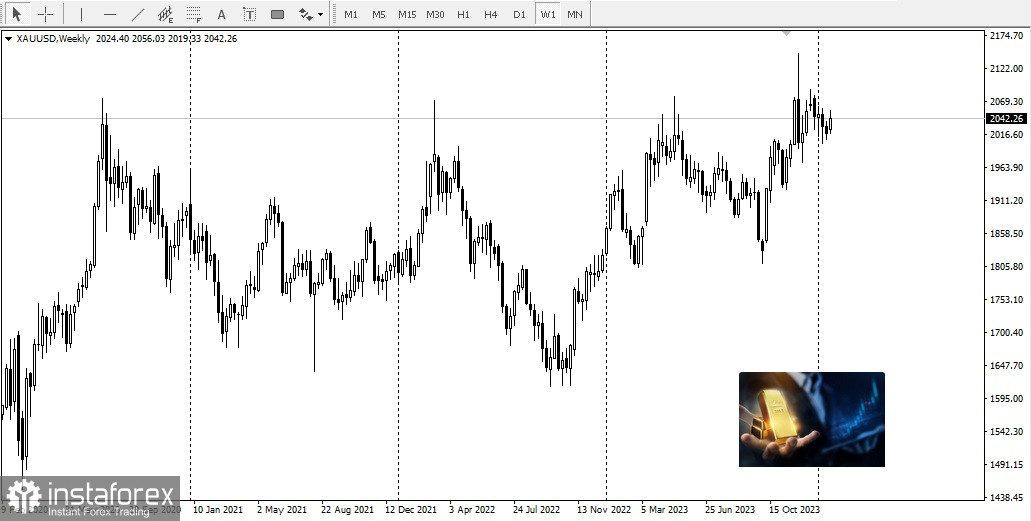
The World Gold Council on Wednesday published a report on gold demand trends for the fourth quarter and the year 2023. The report states that the annual demand for the precious metal, excluding over-the-counter markets, amounted to 4,448 tonnes. This is 5% lower than the demand registered in 2022. However, considering over-the-counter markets and equity flows, the overall demand for gold last year rose to a record 4,899 tonnes.

According to the latest report from the World Gold Council, central bank purchases and purchases of metal on over-the-counter markets contributed to a huge physical demand, leading to a record-high price in the last month of the year. Juan Carlos Artigas, head of WGC's research department, said despite challenging obstacles, as the Federal Reserve continued its aggressive monetary policy, supporting higher bond yields, the precious metal managed to grow by 15%.
Judging by the final price of gold on LBMA, the yellow metal ended 2023 at $2,078.40 per ounce with an average price of $1,940.54 per ounce. This is also a record, 8% higher than the prices of 2022. According to final estimates, central banks bought 1,037 tonnes of gold last year, falling short of the 2022 record by only 45 tonnes.

Over the last ten years, central bank demand has almost doubled compared to the average figure.
As for the World Gold Council's forecast, WGC still expects substantial purchases by central banks in 2024. The report states that central bank demand will return to the pre-record average level of around 500 tonnes.

Analysts also noted that the leader among central banks in gold purchases last year was the People's Bank of China, which acquired 225 tonnes throughout the year. For comparison, the National Bank of Poland was the second-largest gold buyer, purchasing 130 tonnes, thereby increasing its gold reserves by 57%.

Demand for gold-backed ETFs was also driven by Chinese investors. However, China's economy is facing growing obstacles and economic uncertainty. Nevertheless, the precious metal may attract certain demand from Chinese investors.
The report also suggests that central banks may not continue the rapid pace of purchases observed in the last two years, but this trend clearly indicates that gold has become an important risk management tool.
 English
English 
 Русский
Русский Bahasa Indonesia
Bahasa Indonesia Bahasa Malay
Bahasa Malay ไทย
ไทย Español
Español Deutsch
Deutsch Български
Български Français
Français Tiếng Việt
Tiếng Việt 中文
中文 বাংলা
বাংলা हिन्दी
हिन्दी Čeština
Čeština Українська
Українська Română
Română

